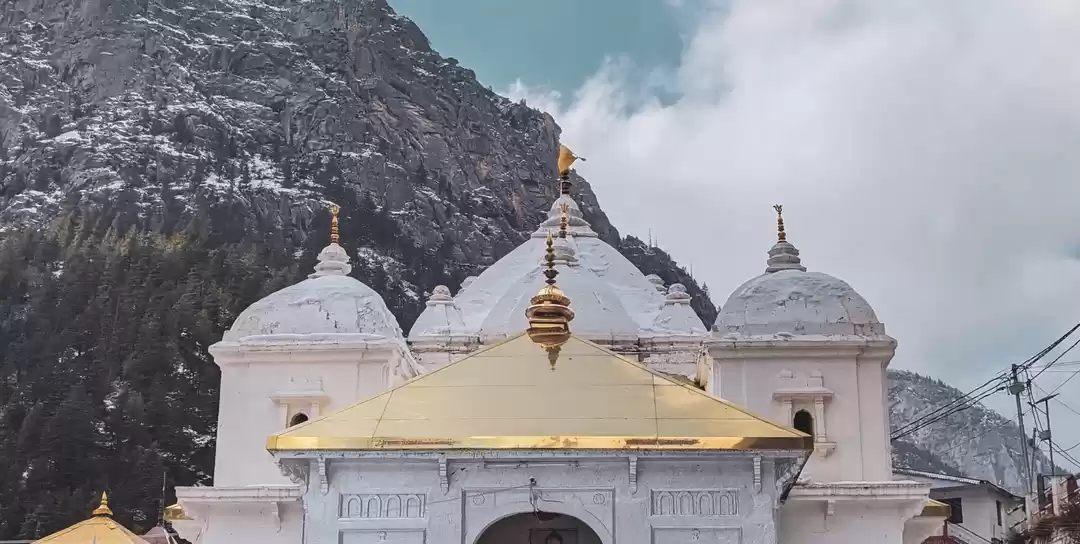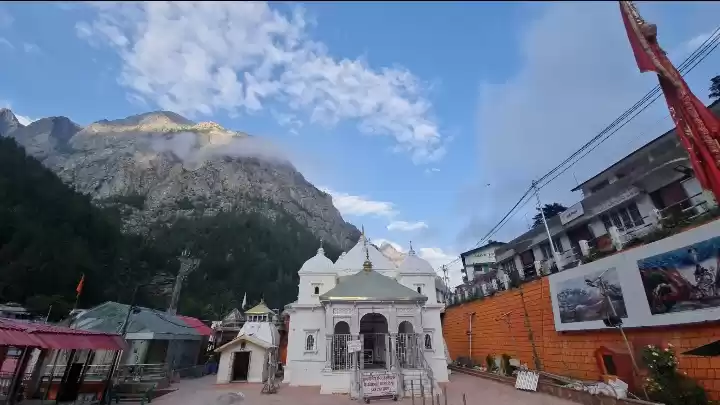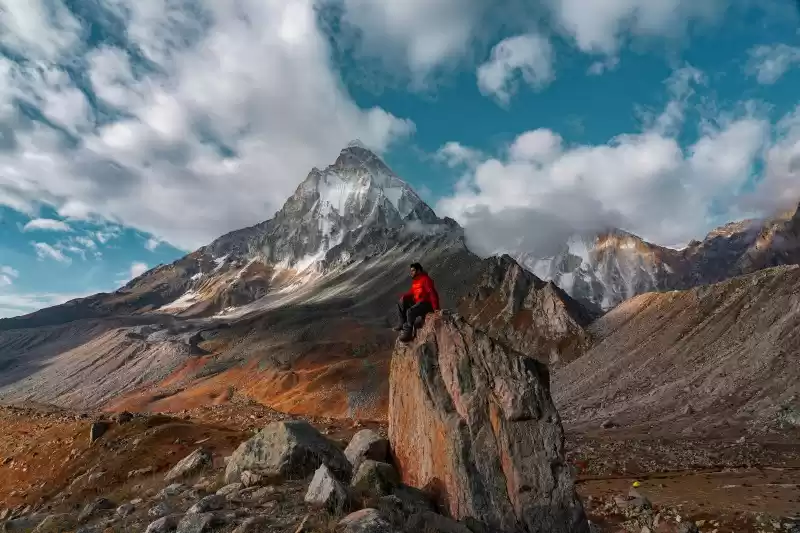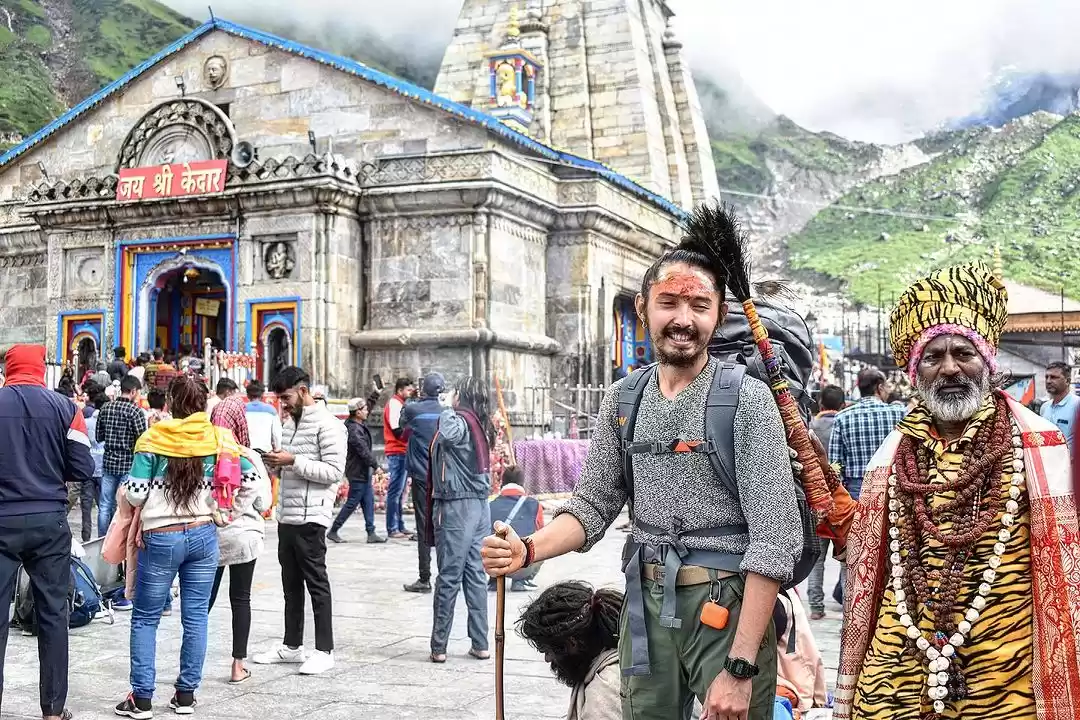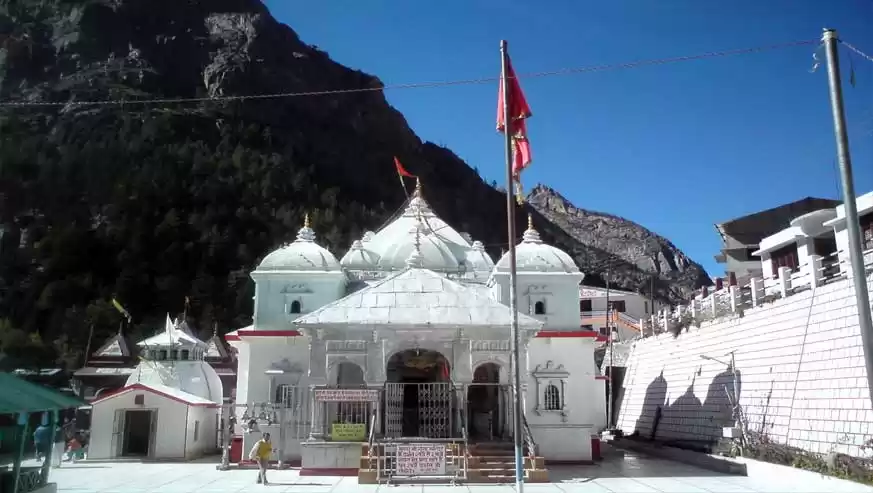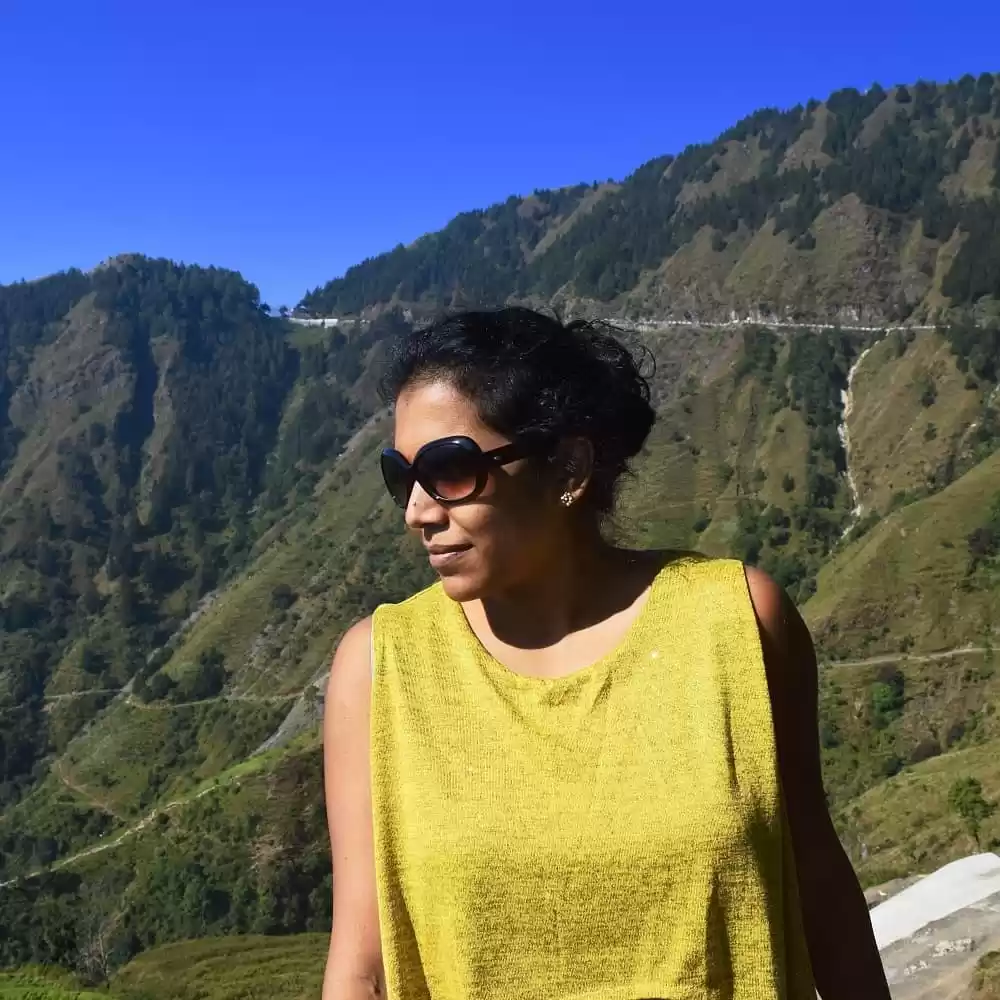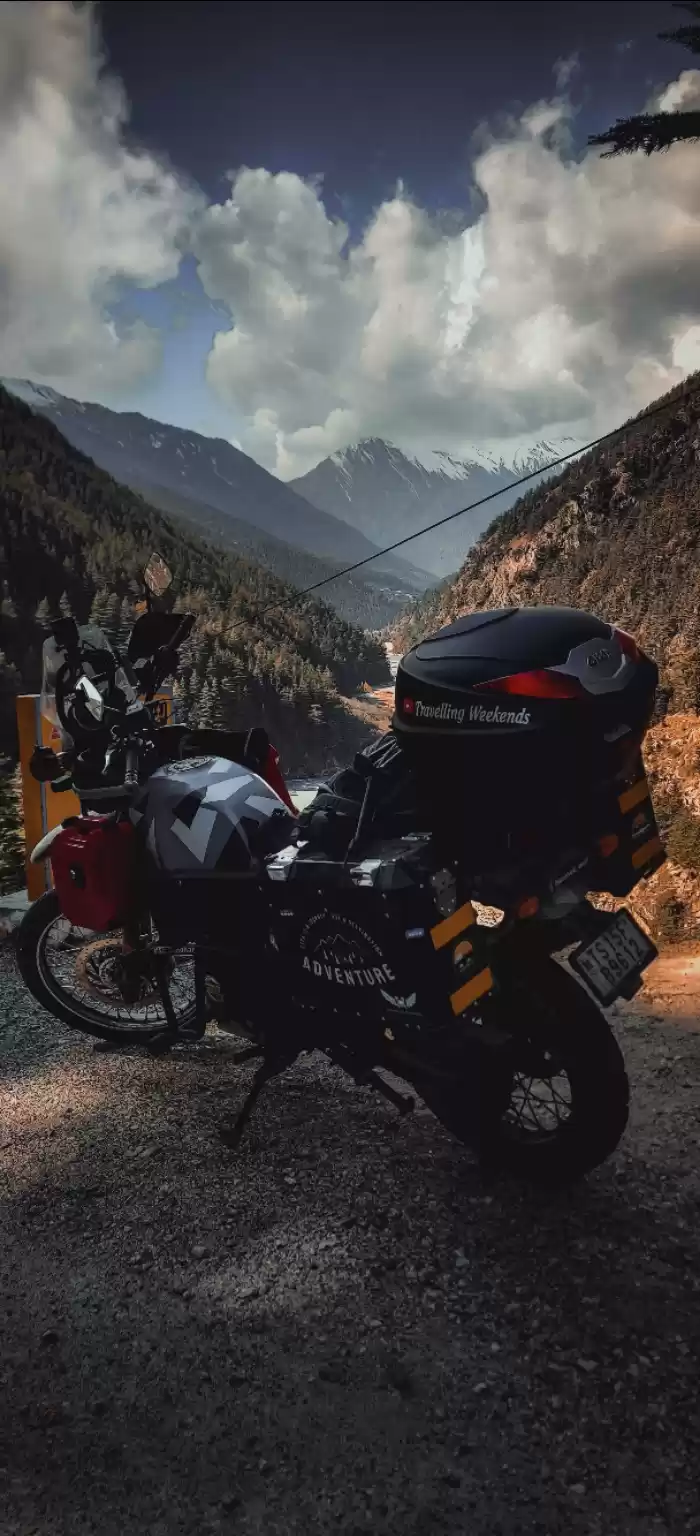Are you looking for a spiritual and adventurous destination in India? Do you want to witness the origin of the holy Ganga river and its mythological significance? Do you want to explore the scenic beauty and the cultural heritage of the Himalayan region? If yes, then Gangotri Temple is the perfect place for you.
Gangotri Temple is a religiously important temple in Hinduism dedicated to Goddess Ganga, the personification of the Ganga river. It is the highest and the most important shrine of the deity, and one of the four sacred pilgrimage sites in the Char Dham circuit. Located in the Uttarkashi district of Uttarakhand, Gangotri Temple is surrounded by the majestic peaks of the Himalayas and the serene flow of the Ganga river.
In this article, we will tell you everything you need to know about Gangotri Temple, its history, legend, architecture, rituals, and nearby attractions. We will also guide you on how to plan your trip to Gangotri Temple, including the best time to visit, the weather conditions, the transportation options, and the accommodation facilities. By the end of this article, you will be ready to embark on a memorable journey to Gangotri Temple and experience the divine grace of Goddess Ganga.

Gangotri Temple: The Highest and the Most Important Shrine of Goddess Ganga
Gangotri Temple is a white marble structure that stands at an altitude of 3,100 meters above sea level. It was built in the 18th century by a Gorkha commander named Amar Singh Thapa, and later renovated by the Maharaja of Jaipur in the 20th century. The temple has a simple and elegant design, with a shikhara (spire) and a mandapa (hall). The temple is open from April to November, and closed during the winter months due to heavy snowfall.
The main attraction of the temple is the idol of Goddess Ganga, which is made of silver and adorned with flowers and ornaments. The idol is believed to have been brought from Nepal by Adi Shankaracharya, a revered Hindu philosopher and reformer. The idol is placed in a small sanctum sanctorum, where only the priests are allowed to enter. The devotees can offer their prayers and receive the blessings of the goddess from outside the sanctum.
The temple also has a small bell that is rung by the devotees before entering the temple. The sound of the bell is said to echo in the valley and create a soothing atmosphere. The temple also has a stone slab that bears the inscription of the construction date and the name of the builder.
One of the most important rituals performed at the temple is the Ganga Aarti, which is a daily evening prayer dedicated to the goddess. The aarti is conducted by the priests, who chant hymns and wave lamps in front of the idol. The devotees also participate in the aarti by singing along and offering flowers, incense, and sweets to the goddess. The aarti is a spectacular sight to behold, as the temple is illuminated by the lamps and the river reflects the light.
Another ritual that is performed at the temple is the Gangotri Puja, which is a special prayer offered to the goddess on the occasion of Akshaya Tritiya, a Hindu festival that marks the beginning of the pilgrimage season. The puja is performed by the priests, who bathe the idol with milk, honey, and water from the river. The puja is followed by a procession, where the idol is carried in a palanquin and taken to the river bank. The devotees also join the procession and offer their respects to the goddess.
Gangotri: The Origin of the Holy Ganga River and Its Mythological Significance
Gangotri is not only the name of the temple, but also the name of the town where the temple is located. Gangotri is considered to be the origin of the holy Ganga river, which is the most sacred and revered river in Hinduism. The river is also known as Bhagirathi, as it is associated with the legend of King Bhagiratha, who brought the river down from heaven to earth.
According to the legend, King Bhagiratha was the descendant of King Sagara, who had 60,000 sons. King Sagara once performed a horse sacrifice to prove his supremacy, but the horse was stolen by Indra, the king of gods, who hid it in the ashram of Sage Kapila. King Sagara sent his sons to search for the horse, and they eventually found it in the ashram. However, they mistook the sage for the thief and insulted him. The sage, who was in deep meditation, opened his eyes and burned the sons to ashes with his fiery gaze.
King Sagara was devastated by the loss of his sons, and learned that the only way to liberate their souls was to bring the water of the Ganga river from heaven and perform their last rites. However, none of his successors could accomplish this task, until King Bhagiratha came to the throne. King Bhagiratha performed severe penance and pleased Brahma, the creator god, who granted him the boon of bringing the Ganga river to earth. However, Brahma warned him that the force of the river would be too great for the earth to bear, and he would need the help of Shiva, the destroyer god, to break the fall.
King Bhagiratha then prayed to Shiva, who agreed to help him. He positioned himself on the Himalayas and caught the river in his matted hair, creating several streams. One of these streams followed King Bhagiratha, who led it to the ashram of Sage Kapila, where he performed the last rites of his ancestors. The river then continued its journey to the plains, where it became known as the Ganga river.
The place where the river descended from heaven is called Gaumukh, which means the mouth of the cow, as the river emerges from a glacier that resembles a cow’s mouth. Gaumukh is located 19 km away from Gangotri temple, and is accessible by a trekking route. It is a popular destination for pilgrims and adventurers, who want to see the source of the river and experience its purity and power.
The place where the river reached the earth is called Gangotri, which means the seat of the Ganga. Gangotri is the place where the temple is situated, and where the river flows in a calm and gentle manner. It is a place of scenic beauty and spiritual significance, where the devotees can take a dip in the river and cleanse their sins and sorrows.
Other Attractions and Activities in and around Gangotri
Gangotri is not only a religious destination, but also a cultural and natural one. There are many other attractions and activities in and around Gangotri, that can make your trip more enjoyable and memorable. Here are some of them:
Underwater Shivling: This is a natural rock formation that resembles a shivling, which is a symbol of Shiva. It is located near the Gangotri temple, and is submerged in the river during the summer months. It is believed that this is the place where Shiva received the river in his hair. The shivling is visible during the winter months, when the water level is low. It is a revered site for the devotees, who offer their prayers and offerings to the shivling.
Pandava Gufa: This is a cave that is believed to be the place where the Pandavas, the heroes of the epic Mahabharata, meditated on their way to heaven. It is located 1.5 km away from the Gangotri temple, and can be reached by a trekking route. It is a peaceful and serene place, where the visitors can experience the tranquility and the spirituality of the cave.
Gauri Kund and Surya Kund: These are two hot water springs that are located near the Gangotri temple, and are named after the goddesses Gauri and Surya. Gauri Kund is dedicated to Gauri, the consort of Shiva, and is a place where the women can take a bath and worship the goddess. Surya Kund is dedicated to Surya, the sun god, and is a place where the men can take a bath and worship the god. The water of these springs is said to have medicinal and healing properties, and can cure various ailments and diseases.
Kedartal: This is a glacial lake that is located at an altitude of 4,750 meters above sea level. It is one of the highest and most beautiful lakes in the Himalayas, and is surrounded by snow-capped mountains and lush green meadows. It is also the source of the Kedar Ganga river, which is a tributary of the Bhagirathi river. The lake is accessible by a challenging trekking route, which takes about 3 to 4 days to complete. It is a paradise for nature lovers and adventure seekers, who can enjoy the stunning views and the thrilling experience of the lake.
Tapovan: This is a meadow that is located at an altitude of 4,450 meters above sea level. It is situated on the other side of the Gaumukh glacier, and is a base camp for the mountaineers who want to climb the nearby peaks, such as Shivling, Meru, and Bhagirathi. It is also a place of meditation and spirituality, where many sages and yogis have practiced their penance and attained enlightenment. It is a place of beauty and bliss, where the visitors can witness the panoramic views and the divine atmosphere of the meadow.
Bhairon Ghati: This is a valley that is located 10 km away from the Gangotri temple, and is named after Bhairon Nath, a fierce manifestation of Shiva. It is a place of natural beauty and historical significance, as it is the site of a battle between Bhairon Nath and Ganga, who tried to stop the river from reaching the earth. The battle resulted in the formation of a gorge, where the river flows in a narrow and turbulent manner. It is also the place where a suspension bridge connects the two sides of the valley, and offers a thrilling and adventurous crossing for the visitors.
Best Time to Visit Gangotri and the Weather Conditions
The best time to visit Gangotri and the Gangotri Temple is from April to June, and from September to November. These are the months when the weather is pleasant and comfortable, and the temple is open for the pilgrims. The temperature ranges from 15°C to 30°C during the day, and from 5°C to 15°C during the night. The sky is clear and the views are spectacular, and the river is calm and inviting.
The months of July and August are not recommended for visiting Gangotri, as these are the months of the monsoon season. The weather is unpredictable and risky, and the temple is closed for the pilgrims. The temperature ranges from 10°C to 25°C during the day, and from 0°C to 10°C during the night. The sky is cloudy and the views are obscured, and the river is swollen and dangerous.
The months of December to March are also not recommended for visiting Gangotri, as these are the months of the winter season. The weather is extremely cold and harsh, and the temple is closed for the pilgrims. The temperature ranges from -5°C to 10°C during the day, and from -15°C to 0°C during the night. The sky is snowy and the views are frozen, and the river is icy and inaccessible.
The weather conditions in Gangotri can change rapidly and unexpectedly, so it is advisable to check the weather forecast before planning your trip. It is also advisable to carry warm and waterproof clothes, shoes, and accessories, and to follow the instructions and precautions of the local authorities and guides.
How to Reach Gangotri by Flight, Train, or Road
Gangotri is well connected by flight, train, or road from different cities and states in India. Here are some of the ways to reach Gangotri by these modes of transportation:
By flight: The nearest airport to Gangotri is the Jolly Grant Airport in Dehradun, which is about 250 km away. The airport is connected by flights from Delhi, Mumbai, Bangalore, and other major cities in India. From the airport, you can take a taxi or a bus to Gangotri, which will take about 8 to 10 hours. The fare for the taxi is around Rs. 5,000 to Rs. 7,000, and the fare for the bus is around Rs. 300 to Rs. 500.
By train: The nearest railway station to Gangotri is the Rishikesh Railway Station, which is about 230 km away. The railway station is connected by trains from Delhi, Haridwar, and other major cities in India. From the railway station, you can take a taxi or a bus to Gangotri, which will take about 7 to 9 hours. The fare for the taxi is around Rs. 4,000 to Rs. 6,000, and the fare for the bus is around Rs. 250 to Rs. 450.
By road: Gangotri is accessible by road from Delhi, Haridwar, Rishikesh, and other major cities in India. You can take your own vehicle or hire a taxi or a bus to Gangotri, which will take about 10 to 12 hours from Delhi, 6 to 8 hours from Haridwar, and 5 to 7 hours from Rishikesh. The fare for the taxi is around Rs. 6,000 to Rs. 8,000 from Delhi, Rs. 3,000 to Rs. 5,000 from Haridwar, and Rs. 2,000 to Rs. 4,000 from Rishikesh. The fare for the bus is around Rs. 400 to Rs. 600 from Delhi, Rs. 200 to Rs. 400 from Haridwar, and Rs. 150 to Rs. 350 from Rishikesh.
The road to Gangotri is scenic and adventurous, as it passes through the mountains, valleys, forests, and rivers. However, the road is also narrow, steep, and curvy, and prone to landslides and traffic jams. Therefore, it is advisable to drive carefully and cautiously, and to avoid traveling at night or during bad weather.

Where to Stay in Gangotri and Nearby Destinations
Gangotri is a small town that has limited accommodation options for the visitors. However, there are some hotels, guest houses, ashrams, and camps that offer decent and affordable stay for the pilgrims and tourists. Here are some of the places where you can stay in Gangotri and nearby destinations:
Hotel Ganga Yamuna: This is a budget hotel that is located near the Gangotri temple, and offers basic amenities and facilities, such as rooms, bathrooms, hot water, electricity, and food. The hotel charges around Rs. 500 to Rs. 1,000 per night for a double room, and Rs. 300 to Rs. 500 per night for a single room.
GMVN Tourist Rest House: This is a government-run guest house that is located near the Gangotri temple, and offers standard amenities and facilities, such as rooms, bathrooms, hot water, electricity, and food. The guest house charges around Rs. 1,000 to Rs. 2,000 per night for a double room, and Rs. 500 to Rs. 1,000 per night for a single room.
Shri Kailash Ashram: This is a religious ashram that is located near the Gangotri temple, and offers simple and spiritual stay for the pilgrims, such as dormitories, bathrooms, hot water, electricity, and food. The ashram charges around Rs. 100 to Rs. 200 per night for a bed, and Rs. 50 to Rs. 100 per night for a meal.
Bhagirathi Sadan: This is a deluxe hotel that is located in Harsil, which is a picturesque village about 25 km away from Gangotri. The hotel offers luxurious amenities and facilities, such as rooms, bathrooms, hot water, electricity, food, and Wi-Fi. The hotel charges around Rs. 3,000 to Rs. 5,000 per night for a double room, and Rs. 2,000 to Rs. 4,000 per night for a single room.
GMVN Camps: These are government-run camps that are located in various places along the trekking route to Gaumukh and Tapovan, such as Bhojwasa, Chirbasa, and Dharali. The camps offer adventurous and comfortable stay for the trekkers, such as tents, sleeping bags, mattresses, blankets, bathrooms, hot water, electricity, and food. The camps charge around Rs. 1,500 to Rs. 2,500 per night for a tent, and Rs. 500 to Rs. 1,000 per night for a meal.
Conclusion
Gangotri Temple is a sacred shrine of Goddess Ganga in the Himalayas, and one of the four pilgrimage sites in the Char Dham circuit. It is a place of religious, cultural, and natural significance, where the visitors can witness the origin of the holy Ganga river and its mythological legend, explore the scenic beauty and the cultural heritage of the Himalayan region, and experience the divine grace of Goddess Ganga.
We hope that this article has given you all the information and guidance that you need to plan your trip to Gangotri Temple. We also hope that you have enjoyed reading this article and learned something new and interesting about Gangotri Temple.


























